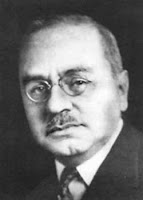The family is viewed from an interactive and systemic
perspective. Clients are connected to a living system; a change in one part of
the system will result in a change in other parts. The family provides the context
for understanding how individuals function in relationship to others and how
they behave. Treatment deals with the family unit. An individual’s
dysfunctional behavior grows out of the interactional unit of the family and out
of larger systems as well. (Gerald Corey)
Key People and their contributions
Alfred Adler was the first psychologist to do family therapy. Adlerian therapy is actually the second post I made here on this little ole blog. You can read about him HERE
Mulch-Generational Family Therapy (Murray Bowen): Focuses on the past and present of family mainly the last three generations. Works on decreasing anxiety and changing the individual person within the family. The therapist works as the guide and teacher. The therapy process involves questions that help the family understand the family origins. It uses genograms, family issues, processing issues through relationships.
Human Validation Process Model (Virginia Satir): Focused on the here and now. Promotes growth and self-esteem. Really focuses in helping the family reach clear communication and interaction. The therapist models the behavior for the family they counsel. They are active on the process of reaching therapy goals. The therapist assist the family going from status quo- chaos - new possibilities. To get through therapy successfully HVP therapist might use role modeling, touch/empathy, family life chronology.
Experiential/Symbolic Family Therapy (Carl Whitaker): This therapy is focused on the now. Whitaker encourages the family in spontaneity, play, being creative. The therapist acts as the coach and models through play. Therapy techniques encourages and includes self-disclosure, confrontation, and change starts with each person.
Structural Family Therapy (Salvador Minichin): Focuses on past and present in the family while confronting dysfunctional roles and changing them. Salvador saw the therapist being the "friendly uncle" or the one who promotes the change in the family. While the therapist leads the family makes new boundaries and changes structure. The techniques involves the therapist/leader to set up boundaries and tracking the family in the changes.
Strategic Family Therapy (Jay Haley & Cloe Madanes): This therapy focuses on the present and the future. The therapist act as the leader and problem solver. SFT works to resolve the problem and keep it from happening again. Some of the techniques are action orientated, role playing, changing behaviors, and reframing the dysfunction in the family.
Here are some videos you might find interesting... (giggle)
OK one more :)
At about 6 minutes the WHOLE family goes :) Love this show!
On a more serious note...














